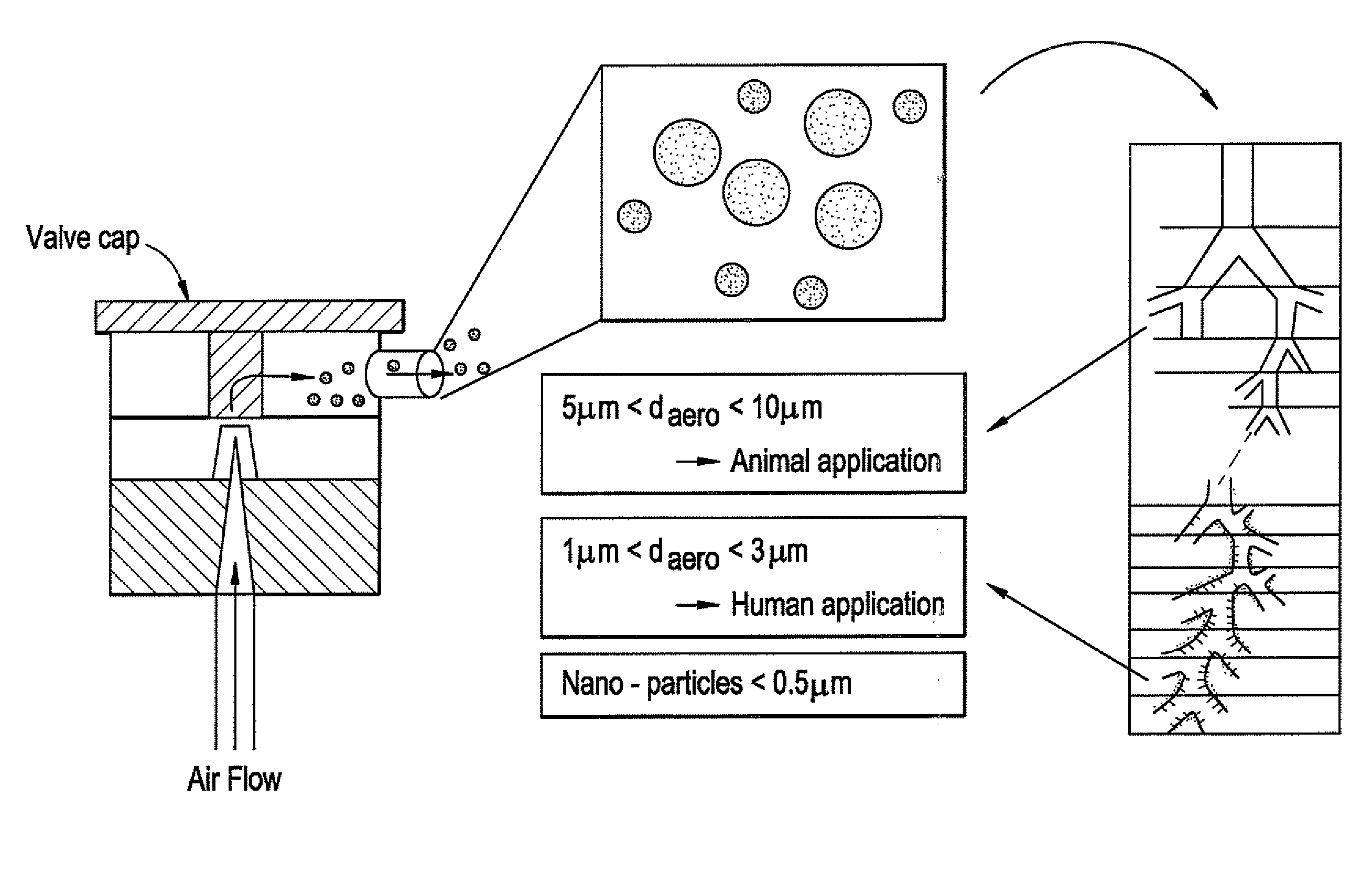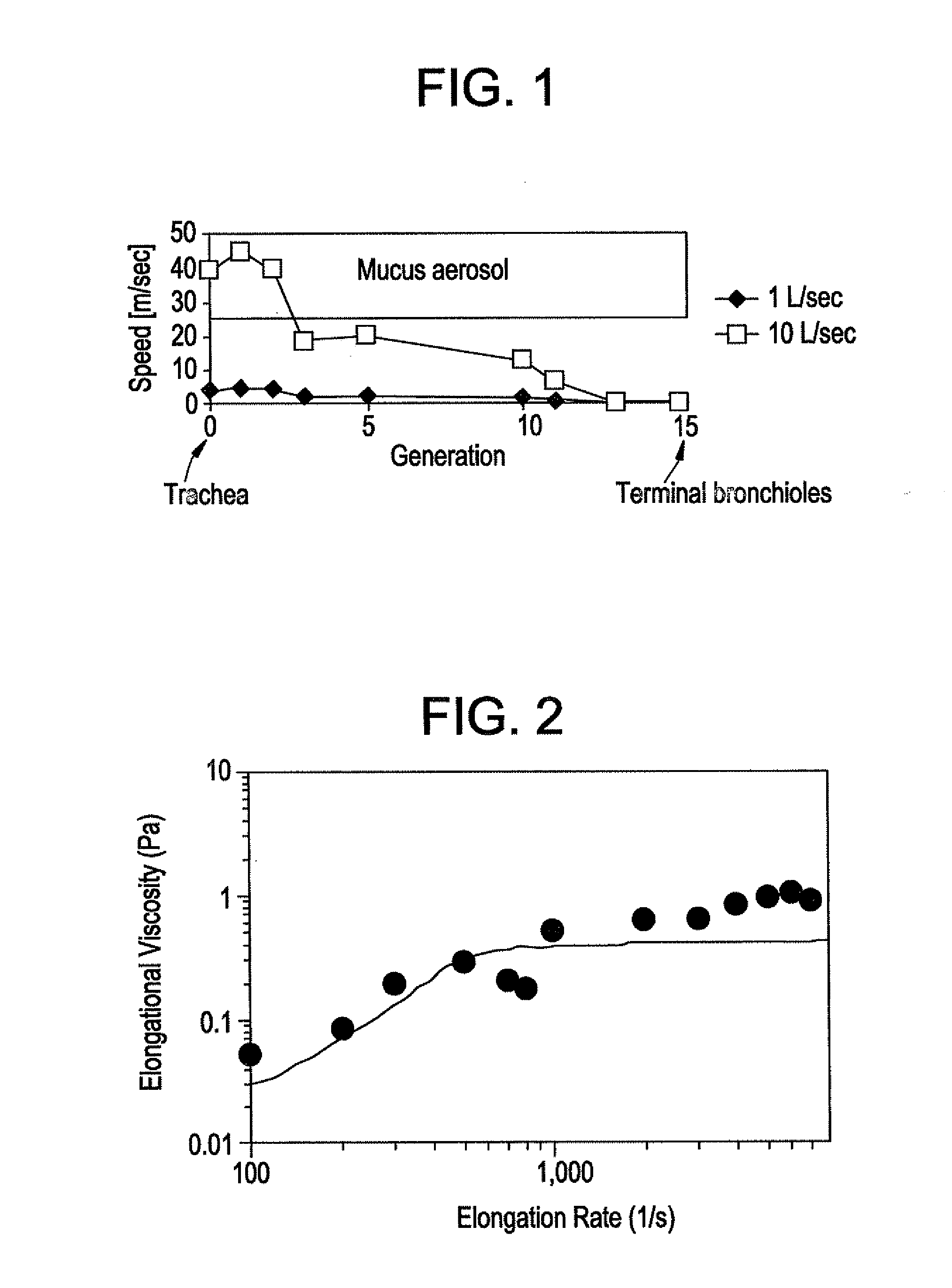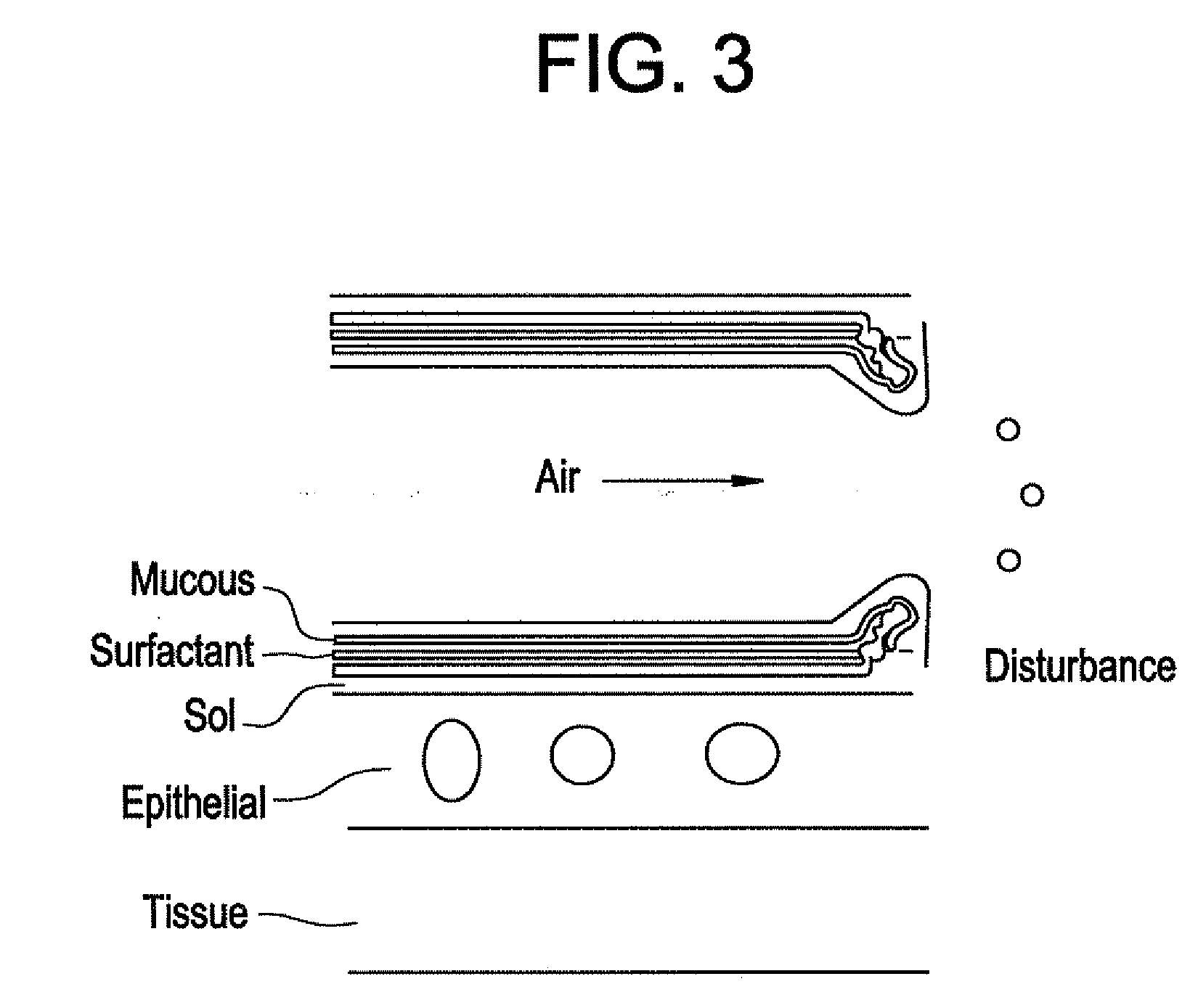Formulations limiting spread of pulmonary infections
- Summary
- Abstract
- Description
- Claims
- Application Information
AI Technical Summary
Benefits of technology
Problems solved by technology
Method used
Image
Examples
example 1
Reduction in Bioaerosol Exhaled from Lungs
[0117]Materials and Methods
[0118]An apparatus was constructed to illustrate the ability of a surface-tension and surface-elasticity altering agent to lower the amount of bioaerosol exhaled from the lungs.
[0119]As shown in FIG. 6, a Hamilton Gas-Tight 500 uL syringe was attached to a Penn-Century Microsprayer, 2 inch Rodent Model 1A-1B, and the end of the syringe was placed within a 1 inch ID PVC tube with lengths of 4, 8, and 12 inches. A Millipore Durapore HVPP filter, pore size 0.45 microns, backed by a stainless steel mesh screen, was abutted at the exit of the PVC tube. The syringe plays the role of the exhaled breath, providing a pressure drop that blows air and liquid through the microsprayer and the PVC tube. The breakup of the liquid in the syringe models the breakup of surfactant liquid in the upper airways during an exhaled breath, and the PVC tube mimics the air path from the site of surfactant liquid breakup in the upper airways ...
example 2
Reduction in Bioaerosol using Natural and Synthetic Polymers
[0127]Materials and Methods
[0128]The same apparatus was used for testing as in Example 1.
[0129]The first solutions to be aerosolized were 80 / 20 (v / v) ethanol / water solutions containing 3.75 g / L of POPC and PEO (Genzyme), and the other solutions were 20 / 80 ethanol / water solutions containing 3.75 g / L of 50K and 500K Da dextrans. The first solutions represent lung lining fluid altered by the presence of two other surfactants, 1-palmitoyl-2-oleoylphosphatidylcholine (POPC) and PEO. The second solutions represent lung lining fluid altered by the presence of a very large macrmolecule (which renders the fluid substantially more viscous) and a smaller macromolecule.
[0130]Results
[0131]The amount of rodamine that reached the filter following injection of the 100 uL from the syringe through the 8 inch PVC tube was measured as in Example 1. Following injection of the solutions and deposition on the filters, the filters were removed and...
PUM
| Property | Measurement | Unit |
|---|---|---|
| Length | aaaaa | aaaaa |
| Surface tension | aaaaa | aaaaa |
| Antimicrobial properties | aaaaa | aaaaa |
Abstract
Description
Claims
Application Information
 Login to View More
Login to View More - R&D
- Intellectual Property
- Life Sciences
- Materials
- Tech Scout
- Unparalleled Data Quality
- Higher Quality Content
- 60% Fewer Hallucinations
Browse by: Latest US Patents, China's latest patents, Technical Efficacy Thesaurus, Application Domain, Technology Topic, Popular Technical Reports.
© 2025 PatSnap. All rights reserved.Legal|Privacy policy|Modern Slavery Act Transparency Statement|Sitemap|About US| Contact US: help@patsnap.com



